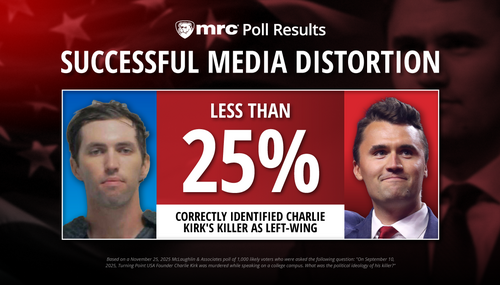For two days running, the front page of the New York Times has delivered Democratic talking points about President Trump’s new tax cut plans. The banner over Thursday’s front page said it all, in big bold letters: “Tax Overhaul Would Aid Wealthiest.”
The coverage lacked the vital context, pointed out by James Piereson in the Weekly Standard this week, that taxes have already been slashed for the poor and middle class, and it’s hard to structure a tax cut that doesn’t “favor the wealthy” in raw monetary terms. The media will never dwell on the inconvenient fact that it’s those same “wealthy” that pay most of the income tax.
The NYT has long misled about taxes to preserve the liberal line that most all of them are bad ideas that will “cost the government,” (whose money is it anyway?) and benefit only “the rich,” while running up the deficit the paper fakes concern about during Republican administrations.
Friday’s front page boasted how the paper knows the wealthy will benefit, even though the Times doesn’t even have the actual details of the plan. Julie Hirschfeld Davis and Patricia Cohen penned, “Trump’s Plan Shifts Trillions To Wealthiest – Despite Lack of Details, Impact Is Clear.”
President Trump’s proposal to slash individual and business taxes and erase a surtax that funds the Affordable Care Act would amount to a multitrillion-dollar shift from federal coffers to America’s richest families and their heirs, setting up a politically fraught battle over how best to use the government’s already strained resources.
The outline that Mr. Trump offered on Wednesday -- less a tax overhaul plan than a list of costly cuts with no price tags attached, rushed out by a president staring down his 100-day mark in office -- calls for tax reductions for individuals of every income level as well as businesses large and small.
Not a good word was to be had for the plan, and all you really needed were the headline decks. Friday’s lead story called out Republicans for deficit hypocrisy (and never mind Democrats who chastise Republicans for tax cuts that run up the deficit, while they themselves keep federal spending on overdrive): “For G.O.P., Deficit Takes A Back Seat To Cutting Taxes – When Party Is In Power – Turning to Back Trump, but Some Maintain Hawkish Stance.”
From an office high above Manhattan, the billionaire Peter G. Peterson has warned for years that the federal government is borrowing too much money. So have other Republican grandees, like former Senator Alan K. Simpson, who made dire predictions about the federal debt in a 2010 report. Republicans in Congress have been eager to sing from the same hymnal so long as a Democrat was in the White House.
But when Republicans take charge, their fiscal rectitude sometimes starts to waver. The broad Republican support this week for President Trump’s plan to sharply reduce taxes suggests that those who hang on to austere concerns about debt will now be facing former allies who want to chase economic growth.
Some Republicans are rallying around the idea that less taxation is more important than less debt, just as they did during the Republican presidencies of Ronald Reagan and George W. Bush. That shift is a break with the die-hard hawks of the anti-deficit industrial complex, who have long warned of calamitous consequences to the American economy.
Besides the DNC-approved banner headline, Thursday’s front page was also all about deficits and skimpy on the benefits of economic growth to come from lower taxes as in reporter Alan Rappeport’s “Trump’s plan Brings Moment of Truth for G.O.P. Deficit Hawks -- Cost has the Potential to Reach $7 Trillion Over a Decade.”
As President Trump’s top economic advisers faced a barrage of questions on Wednesday about the tax plan they had just unfurled, there was one that they struggled most to answer: how to keep the “massive tax cuts” they proposed from ballooning the federal deficit.
The White House insists that economic growth will cover the cost, which could be as high as $7 trillion over a decade. But the question will dog Republicans and could fracture their party as they face the prospect of endorsing a plan that many economists and budget analysts warn will increase the deficit. After years of fiscal hawkishness, conservatives now face a moment of truth about whether they truly believe America’s economy is drowning in debt.
Some skeptics are already ringing alarm bells, fearing that Republicans will sign on to what critics see as a dangerous plan composed by a president who called himself the King of Debt.
“It seems the administration is using economic growth like magic beans: the cheap solution to all our problems,” said Maya MacGuineas, president of the Committee for a Responsible Federal Budget, a nonpartisan group that advocates fiscal restraint. “But there is no golden goose at the top of the tax-cut beanstalk, just mountains of debt.”
Thursday’s front page also featured Julie Hirschfeld Davis and Alan Rappeport’s “Radical Revision of Code, on a Single Page.” The online headline was blunter: “White House Proposes Slashing Tax Rates, Significantly Aiding Wealthy.”
The story dutifully highlighted Trump’s ideas, like reducing the corporate tax rate, doubling the standard deduction and simplifying the brackets, and dismissed them under the graphic: “What Trump’s Tax Proposal Will Cost – A point-by-point look at how much it will increase the federal deficit.” And never mind our paper’s constant calls for more federal spending.
Weekly Standard’s Piereson characterized the “conundrum” of “how to avoid the charge that any major tax cut will ‘favor the rich,’ given that the great bulk of the federal income tax is paid by those in the highest brackets. In a situation where "the rich" pay most of the income taxes, "the rich" will reap significant benefits from cuts in those taxes....140 million households paid about $1.4 trillion in individual income taxes in 2014, which covered about 38 percent of federal expenditures in that year. In terms of the distribution of the tax burden, the top 50 percent of income earners paid 97 percent of the total income taxes, the top 10 percent paid 71 percent, and the top 1 percent of earners (starting at $466,000 in gross income) paid nearly 40 percent of all federal income taxes.”




